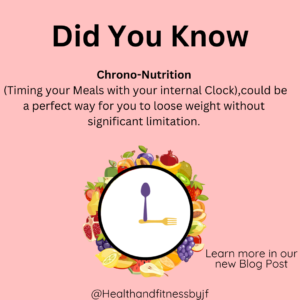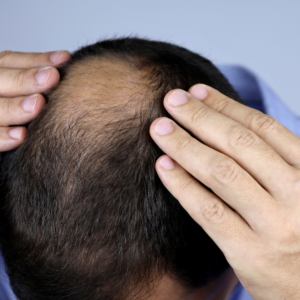Navigating the landscape of the health and fitness scene , there’s a subtle theme circling around, the “micro-dosing movement”. When you dive into research in this niche, you’ll find whispers of its influence weaving through success stories and strategies of high achievers. But here’s the twist: it’s entwined with the realm of drugs, blurring the lines between curiosity and caution.
The concept of micro-dosing isn’t just a passing trend, for years stories of this movement and its benefits circle through the Internet. Is it a game-changer or a risky venture? Can it truly enhance our lives without tipping the balance?
In this blog post, we embark on a journey to unravel the enigma of micro-dosing. It’s not about persuading or dissuading; it’s about understanding. We’ll navigate through the facts and the science. Ultimately, this exploration aims to equip you with knowledge, enabling you to construct your informed opinion about this intriguing theme.
Micro-dosing Definition
Micro-dosing, at its core, refers to the practice of ingesting minimal amounts of a substance, typically a psychedelic or a psychoactive compound, in quantities significantly lower than those required to induce noticeable alterations in perception or consciousness.
This technique involves consuming sub-perceptual doses—tiny fractions of a standard dose—that are believed to offer potentially beneficial effects. The aim isn’t to experience a psychedelic trip but rather to harness the purported therapeutic or cognitive benefits associated with these substances while avoiding their hallucinogenic or mind-altering properties.
Which Substances are Most Common for Micro-dosing ?
The substances most commonly associated with micro-dosing include LSD and Psilocybin.
Here i listed for you two short definitions of the substances:
LSD (Lysergic acid diethylamide): LSD is a potent hallucinogenic drug known for its ability to profoundly alter perception, mood, and thought patterns. It’s synthetically derived from ergot fungus and can induce intense visual and sensory distortions, leading to a “trip” that lasts several hours. Effects include heightened sensory experiences, distorted sense of time, and altered perception of reality.
Psilocybin: Psilocybin is a naturally occurring psychedelic compound found in certain species of mushrooms, commonly known as “magic mushrooms.” When ingested, psilocybin is converted into psilocin in the body, which interacts with serotonin receptors in the brain. Its effects typically include visual and auditory hallucinations, changes in perception, mood alterations, and a sense of interconnectedness or spiritual experiences. The effects vary in intensity and duration depending on dosage and individual sensitivity.

Mushrooms that contain Psilocybin micro-dosed into a pill organizer.
What Potential Benefits can Micro-dosing Have ?
As already indicated, unlike the traditional intent associated with substances like LSD or psilocybin, where the aim is to induce a profound altered state of consciousness, micro-dosing takes an entirely different route. The essence of micro-dosing lies in consuming minuscule doses—far below the threshold that triggers noticeable psychedelic effects.
The effects of these minuscule doses are described in many different ways. Here are the main effects that are described as most common:
Heightened Creativity: Many proponents believe that micro-dosing prompts creativity without the overwhelming hallucinations. It’s often praised for unlocking a flow of new ideas and innovative perspectives.
Enhanced Focus and Productivity: Micro-dosing is suggested to boost focus and productivity. Users report improved concentration, smoother workflow, and a sense of mental clarity and alertness.
Mood Uplift: Anecdotal evidence hints at mood improvement through micro-dosing. Some users describe a subtle but noticeable lift in mood and a reduction in negative thought patterns.
Emotional Insight: Micro-dosing is associated with increased emotional receptivity and deeper self-reflection. Users often report heightened empathy and a better understanding of their emotions and behavior.
Nevertheless, it’s crucial to acknowledge that while these benefits are widely discussed, robust scientific evidence validating these claims remains in the early stages and of course there are also potential negative effects which have to be acknowledged.
Potential Risks
Micro-dosing is often discussed in a positive light but it’s essential to consider potential risks and limitations associated with this practice.
Firstly, legality poses a significant concern. In many countries, these substances are illegal or heavily regulated. Engaging in micro-dosing could lead to legal repercussions if caught in possession.
Another factor is the unpredictable nature of its effects. Body weight, metabolism, and individual sensitivity greatly influence the response to micro-dosing. This variability makes outcomes uncertain and potentially different for each person.
Long-term effects remain largely unknown. Anecdotal evidence hints at benefits, but comprehensive scientific research on prolonged micro-dosing’s impacts on mental health, brain function, and the body is lacking. Moreover, for individuals with underlying mental health conditions, micro-dosing could be risky. It might exacerbate symptoms of anxiety, paranoia, or psychosis. Those with a personal or family history of mental health issues should approach micro-dosing cautiously.
Conclusion
In summary, delving into the practice of micro-dosing reveals a mix of potential benefits and drawbacks. It suggests opportunities for improving aspects like creativity and mood, yet it also poses legal, unpredictable, and unknown long-term risks.
As with any subject, micro-dosing presents both positives and negatives. It’s an area where individuals need to proceed thoughtfully, aiming to tap into its potential advantages while being aware of the associated risks. Recognizing this balance underscores the importance of informed decisions and a cautious approach.
Micro-dosing’s complexities highlight the need for a balanced understanding of its pros and cons. Navigating these aspects is key to making informed choices while exploring the possibilities it might offer. I hope with this information you can build your own opinion on this theme and decide if you want to participate in this trend. If you would like to see and learn more about micro-dosing check our Instagram page here. If you want to learn about how Testosterone affects Women, this blog post here would be your best option. Thank you for reading our article, we hope you enjoyed and if share it with your friends and family. See you soon. Cheers.
Sources
- A systematic study of microdosing psychedelics” – Journal of Psychopharmacology: This study delves into the effects of microdosing on mood and cognition. Journal of Psychopharmacology
- “The effects of microdose LSD on time perception: a randomised, double-blind, placebo-controlled trial” – Psychopharmacology: This study investigates the impact of microdosing LSD on time perception. Psychopharmacology
- “The prevalence and pattern of illicit drug use in people who microdose with LSD” – Scientific Reports: This research explores the prevalence and patterns of drug use among microdosers. Scientific Reports
- “The Quantified Self during Travel: Exploring the Effects of Microdosing LSD on Emotion Enhancement” – Frontiers in Human Neuroscience: This study examines the emotional effects of microdosing LSD during travel. Frontiers in Human Neuroscience





One comment
Your article helped me a lot, is there any more related content? Thanks!